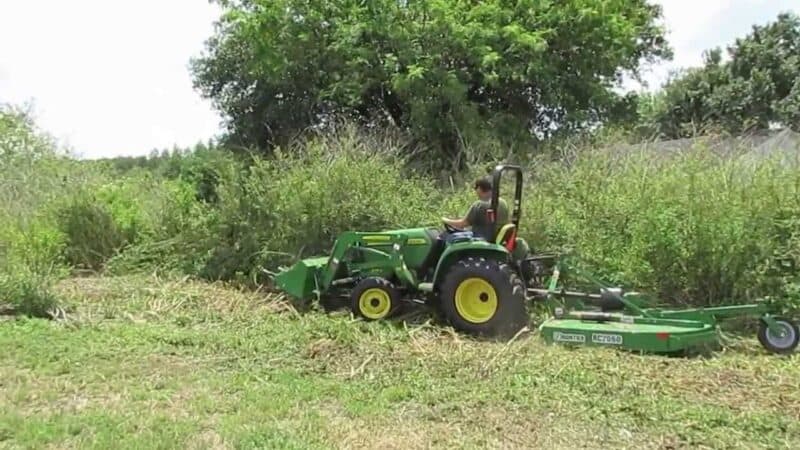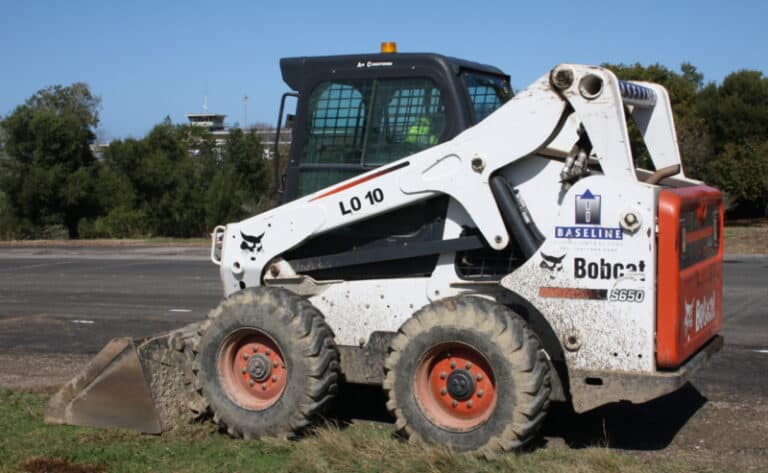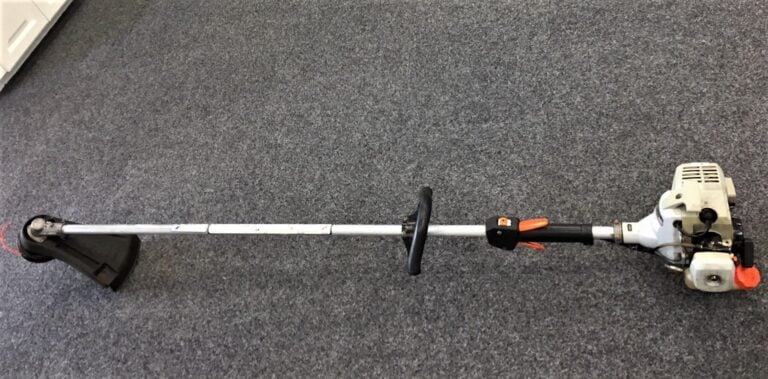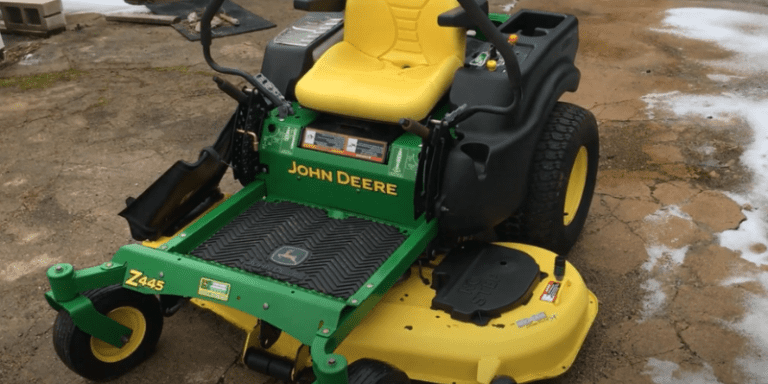Everything You Need to Know about Bush Hog Blades

Taking care of the many plants, trees, and bushes in your yard may require busting out your bush hog and trimming them to a more reasonable level. Bush hogging has become a popular lawn care option for many homeowners and is a unique process that includes installing, cleaning, sharpening, and balancing bush hog blades on your cutting machines. This ensures that they remain effective.
Let’s take a look into the process of bush hogging and examine bush hog blades and how you can take care of them. These steps are things that just about anybody can do themselves without working with specialists. Ensure you wear gloves and use the proper tools listed throughout each section. Doing so will ensure that you don’t hurt yourself on what can be very sharp blades.
What is Bush Hogging?
Bush hogging uses a tool called a bush hog that helps you cut grass, trees, bushes, and even vines throughout your property. Like a lawn mower, a bush hog uses high-speed blade rotation to cut through these items. However, they are often much larger than a lawnmower, as many as 12 feet or more on some models. They help you quickly take care of a large portion of your yard.
They can attach to a tractor’s hydraulic system to provide power that cuts through your vegetation quickly and efficiently. You can typically raise and lower them as you cut to slice closer to the ground or further. The power take-off is a potent option that lets the system operate on the bush hog’s driveshaft to provide high power to cut through vegetation quickly and efficiently.
Bush hog blades are larger lawnmower blades that operate similarly on your machine. Typically, they attach tightly to the bottom of the bush hog but can cut more effectively than many smaller lawnmowers. There are many different ways that you can use bush hog blades on your lawn or property to ensure that you keep your lawn looking attractive and appealing.
How Can You Use a Bush Hog Blade?
Bush hogs can be used as a replacement for a lawnmower, though they’re best suited to larger yards. They can also be used in specialized environments to handle various difficult cutting situations. Just a few places where you may want to use a bush hog include:
- Cutting Large Fields: Do you have a large lawn or even own farm property that you like to keep looking attractive? Then, Bush hogging is probably the best step for you. It can help you cut your vegetation quickly and effectively and help manage things like ticks, fleas, and even lawn diseases.
- Cleaning Up Over Rough Areas: Many areas in your lawn may have rough areas, such as spots near the edges of forests. Thankfully, bush hog blades can typically handle these rough areas with stronger blades and more power that helps to eliminate your excess growth.
- Managing Rocky Areas: Bush hogging can help around rocky areas throughout your yard and eliminate growth throughout these areas. Bush hog blades are designed to withstand this rough terrain without getting too damaged, allowing you maximum cutting capacity.
- Protecting Wetlands: Your traditional lawnmower may struggle around wetlands. Furthermore, federal laws protect these areas from excessive vegetation removal. Bush hogging can help you clean up these rough areas without serious operational issues.
When using a bush hog, it is crucial to follow safety procedures, like keeping your hands away from the blades and the machine on the ground while it operates. Taking care of your bush hog blades also requires safety steps, whether sharpening, cleaning, or balancing your blades.
Do You Need to Sharpen Bush Hog Blades?
Yes, it would be best to sharpen bush hog blades to stay firm periodically. After all, they are often used to clear things like bushes, tall grass, and even small trees. Unfortunately, this wear and tear will start damaging the blades over time. Damage is even more likely when mowing on rough areas near rocks, as even small stones can cause nicks and cracks to your blades that require sharpening.
Sharpening is significant because dull blades won’t cut as well as sharp ones. That might not seem like a big deal, but duller blades will potentially bend or even crack when cutting things that bush hog blades could typically handle. Even worse, dull blades will tear your plants rather than cut them, leave your yard looking rather unappealing, and even cause lawn health issues.
Furthermore, dull blades force your bush hog to use more power when cutting. For example, when the blades don’t evenly cut through grass, the motor will strain trying to push the blade through the vegetation. This can result in more wear and tear on the blades, which will eventually cause permanent damage to your motor. Therefore, sharpening your blades is critically vital for your bush hogging.
How Often Do You Sharpen Bush Hog Blades?
It would be best to sharpen your bush hog blades at least once every five years to keep them strong and efficient. You typically sharpen them by hand using various files and other tools that help sharpen the blades’ edge and keep them strong. While you can always replace your blades rather than sharpen them, sharpening them can increase their lifespan and save you money on replacement.
That said, there are times when you might need to sharpen your blades more often. For example, if you cut through particularly sharp vegetation near a lot of rocks, it is important to sharpen your blades more often. Many bush hoggers use one rule of thumb when deciding to sharpen their blades: when it no longer easily cuts through a sapling without tearing through it.
You can also pay attention to the shape of the blade teeth. The teeth should be triangular and sharp, looking a bit like shark teeth when they’re fully sharpened. When they look rounded and lack the triangular edge of a fully sharpened blade, it is time to sharpen each tooth. Doing so can add years to your blade’s life and make it easier to keep your lawn strong and attractive.
What Method Do You Use to Sharpen Bush Hog Blades?
Sharpening your bush hog blades is a relatively simple process that is the same as sharpening your lawnmower blades. Follow these steps to ensure that you properly and safely sharpen your bush hog blades to keep them sharp:
- Park the tractor and raise the mower deck
- Turn off the engine and set the parking blade
- Remove the key to minimize the risk of the mower turning on
- Find the nut holding the blade to your bush hog
- Use a wrench to remove the nut
- File the teeth on the blade to restore their shape
Make sure that you always wear gloves while sharpening the blade. Use an up-down stroke on both sides of the tooth to sharpen it properly. If your blade is too dull, you may need to use a grinder to sharpen them properly. Note: you may eventually need to replace your blade instead of sharpening it.
Should I Sharpen or Replace My Bush Hog Blades?
How often do you use your bush hog? If you use it regularly during the warmest times of the year, you may want to replace your blades rather than sharpen them. Every time you sharpen your blades, you remove a little bit of the metal from the blade. After enough sharpening periods, your blade won’t have enough metal to remove and will start getting smaller rather than sharper.
Note that you can potentially use the same blades for decades without having to replace your blades. If you use your bush hog as a lawnmower in clean areas, you don’t have to replace them. When minimal rocks or heavy vegetation is present in the area, your blades can be sharpened once a year or less to keep them effective. The blades may then last for many years.
Here’s a good rule of thumb: once your blades are below one-sixteenth of an inch, it is probably time to replace it. At that point, there’s not enough metal to sharpen your blade to the point that it needs to cut correctly. Replacing your blades is a relatively simple process: follow the same steps you would when sharpening the blade but put on a new blade instead of sharpening an old one.
Can You Clean and Balance Bush Hog Blades?
You can clean your bush hog blades by removing them using the same process mentioned previously and scrubbing them with a wash rag and dish soap. Make sure that you dry them thoroughly to avoid rust. Pay attention to hard-to-reach areas to break apart the grime and ensure that the blades are clean.
Balancing your blades helps keep them from wearing down in specific areas due to the blade focusing on one site. Balance them by filing the heavier side with your file until they hang evenly when you place them on a nail on the wall.






